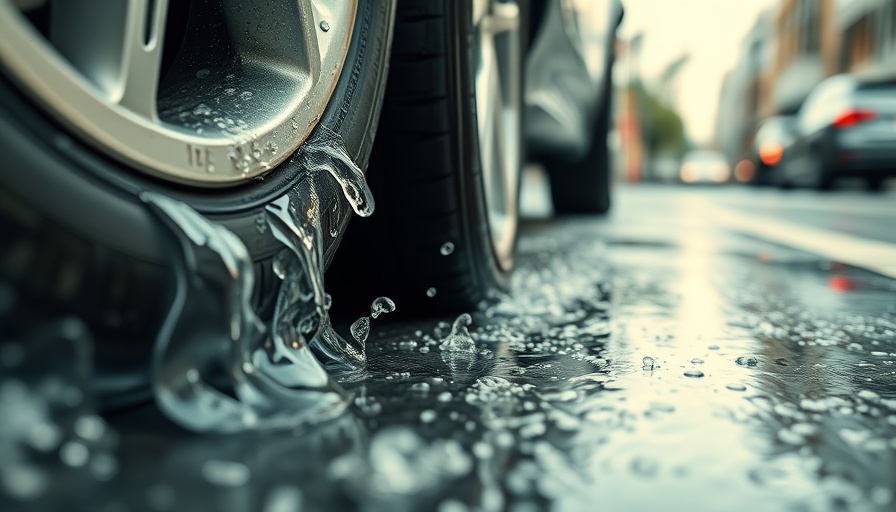
Understanding Hydroplaning: What Happens to Your Tires?
Hydroplaning is akin to driving on ice, where your tire loses connection with the road due to a thin film of water. This phenomenon occurs when a tire collects more water than it can disperse, causing the tread to oversaturate. As defensive driving expert Robert Dillman explains, this can lead to a dangerous hydroplaning event, where control over steering, acceleration, and braking is severely compromised.
Why is Hydroplaning a Hazard?
Sliding over water can be incredibly perilous for drivers. When hydroplaning, tires are not gripping the road, making it difficult to steer or stop effectively. This leads to reduced control and increases the risk of accidents, especially when unexpected road conditions arise.
The Key Causes of Hydroplaning: What to Watch For
Road conditions significantly play a role in the likelihood of hydroplaning. Key factors include:
- Water on the Road: Waterlogged roads are the primary culprits. If water accumulates above the tread, your tires struggle to maintain contact.
- Road Oils: After dry spells, oil and grime settle on roads. When rain hits, these can create a slippery surface, heightening hydroplaning risks.
- Weather and Speed: Fast driving in wet conditions drastically reduces the tire's ability to push water out of the tread, which can lead to hydroplaning.
- Tire Condition: Worn out or improperly inflated tires have diminished performance in water, raising the risk of losing control.
- Road Conditions: Smooth or poorly drained road surfaces can increase water accumulation, promoting hydroplaning.
Tips to Prevent Hydroplaning: Drive Smart
Preventing hydroplaning is crucial for vehicle safety. Here are some practical tips:
- Maintain Tire Health: Ensure that your tires are regularly checked for wear and are properly inflated.
- Adjust Speed: Slow down in rainy conditions, allowing tires ample opportunity to disperse water.
- Avoid Sudden Moves: Make gradual turns and avoid abrupt braking to maintain control of your vehicle.
Future Insights: Car Technology and Hydroplaning
As technology advances, the automotive industry is focusing on enhancing tire designs and improving vehicle safety systems. Innovations like anti-lock brakes (ABS) and advanced traction control systems are paving the way for safer driving experiences, especially in challenging weather conditions.
Recognizing the Risks: Personal Stories
Many drivers have experienced the terrifying moment of hydroplaning. Sharing stories can raise awareness about the importance of safety. One driver recounted a near-miss due to a sudden rainstorm and hydroplaning that resulted, ultimately stressing the need for caution on wet roads. Such anecdotes can be powerful reminders of why we must prioritize safety.
What You Can Do Today
Understanding the factors and risks of hydroplaning empowers you to drive more safely. Regular tire maintenance, mindful driving, and learning about your vehicle's safety features can significantly enhance your road safety. So why not take a moment today to check your tire pressure and tread depth?
 Add Row
Add Row  Add
Add 




Write A Comment